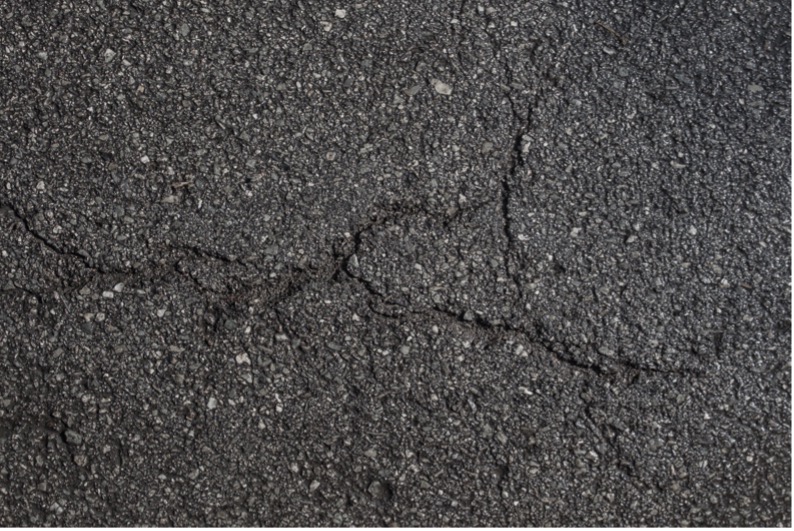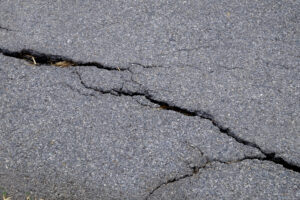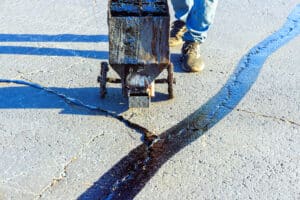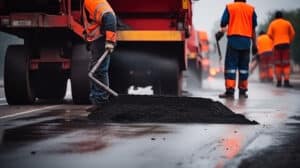Is your new asphalt condition low-quality, and are worried about signs of a bad asphalt job? Poorly executed asphalt applications can lead to costly repairs for property owners. It’s crucial to be able to spot low-quality asphalt services to ensure you receive the quality paving you deserve.
Below, we’ll break down five signs of a bad asphalt job to watch, their causes, and how to fix them with high-quality asphalt professionals.
6 Signs of a Bad Asphalt Job to Watch
Recognizing the signs of a bad asphalt job is crucial not only to avoid costly repairs and premature deterioration but also to ensure the safety and functionality of your paved surfaces. As a property owner, investing in high-quality asphalt paving is crucial for pedestrian safety and coding compliance.
Here are five signs of a bad asphalt job to ensure you receive proper services from reputable contractors.
1. Raveling
One of the first signs of a bad asphalt job asphalt raveling. If the asphalt isn’t installed in a timely manner, the aggregate will start to ravel. A poorly mixed aggregate and bad compaction can also be a cause of raveling. Raveling can cause the asphalt to become more rough, less skid resistant, and can result in faster deterioration.
One raveling has occurred, there are some actions you can take to repair the asphalt instead of getting a completely new asphalt job. The best way is to get asphalt seal coating done on the affected area to cover it.
2. Cracking
Another sign of a bad asphalt job is asphalt cracking. This type of asphalt damage has various causes, including improper pavement, excess moisture, age, and freezing weather conditions.
There are two main types of asphalt cracking:
- Fatigue/alligator cracking– caused by improper installation or underlying asphalt layer breakdown, pavement can’t handle the stress of traffic loads, alligator pattern cracks
- Thermal cracking– long, skinny, typically perpendicular cracks, isn’t flexible enough to expand/contract with temperature changes, common even with quality asphalt jobs
Three methods fix alligator and thermal cracking: crack sealing, sealcoating, and repairs. There are many causes of cracks with varying damage severity, so understanding when to seal vs. repair cracked asphalt is crucial to knowing how to fix them.
Crack sealing is ideal for filling cracks ¼ inch to 1 inch wide. Larger asphalt cracks, like alligator cracking, require special sealants since they’re too large to use standard rubberized crack sealant – yet too small for repairs. For extensive asphalt cracks requiring repairs, use replacement patching with a subbase below the pavement to strengthen the foundation.
With these insights, you’ll know how to work with pavement contractors to fix cracks potentially caused by installation or maintenance issues.
3. Uneven Surface
As with any outdoor surface, wear and tear and deterioration are inevitable. However, with newly paved or maintained asphalt, you shouldn’t be experiencing uneven surfacing soon after servicing.
Some signs of a bad asphalt job with uneven surfacing are:
- Improperly laid slabs during initial pavement or maintenance
- Inaccurate land surveys before construction
- Inadequate asphalt thickness based on traffic volume
- Poor preparation, asphalt mixing, and compacting
- Low-grade joint construction
There are other causes of uneven asphalt surfaces, such as environmental factors and aging over time. Sealcoating or asphalt repairs may be warranted depending on the uneven surface severity.
4. Shrinkage
Low-quality asphalt workmanship and materials can lead to premature shrinkage. Typically, during the installation process, improper compaction creates air pockets within the asphalt mixture. Water can seep into these gaps, expand, and contract them during freeze-thaw cycles – causing shrinkage.
Asphalt resurfacing with proper compaction helps remove air pockets caused by shrinkage. In addition to asphalt maintenance, like crack sealing and sealcoating, it can provide an extra layer of protection to prevent water intrusion and pavement deterioration.
5. Slow Water Drainage
Slow water drainage or standing water on asphalt is one of the top signs you need asphalt repairs. Drainage issues can be caused by poor installation or improperly sloped pavement. It can lead to more significant structural issues, like cracks, potholes, and public safety hazards.
Standing water can be prevented by asking your asphalt professional about the following solutions:
- Strong drainage system installation
- Proper sloping
- Sealcoating to prevent moisture penetration
- Replacement patches
- Pothole repairs
- Crack sealing
If you notice slow water drainage or standing water after a recent asphalt service, it’s one of the top signs of a bad asphalt job.
6. Rough Seams
Last on our list of signs of a bad asphalt job is rough seams. During initial pavement, seams are required to connect your asphalt to the surface. Like fabric, it’s “sewn” together, so it doesn’t unravel or separate after it’s compacted.
If your asphalt contractors took too long to pave the seams, it may not connect. The good news is that rough seams can be repaired with sealcoating services. Its thin liquid layer helps seal in any open or rough seams to ensure it sticks together for a smoother-looking surface and enhanced curb appeal.
Hire High-Quality Asphalt Repair Professionals at Superior Asphalt
Understanding the signs of a bad asphalt job is crucial for homeowners and commercial property owners with parking lots. In addition to repairs, low-quality asphalt services pose serious safety hazards, such as tripping or vehicle damage.
Now that you know low-quality paving signs, get your asphalt repaired with high-quality asphalt professionals at Superior Asphalt. Our company has been in the asphalt industry since 1987 and takes pride in satisfying our customers with professionalism.
Contact us for questions or asphalt repairs today!




